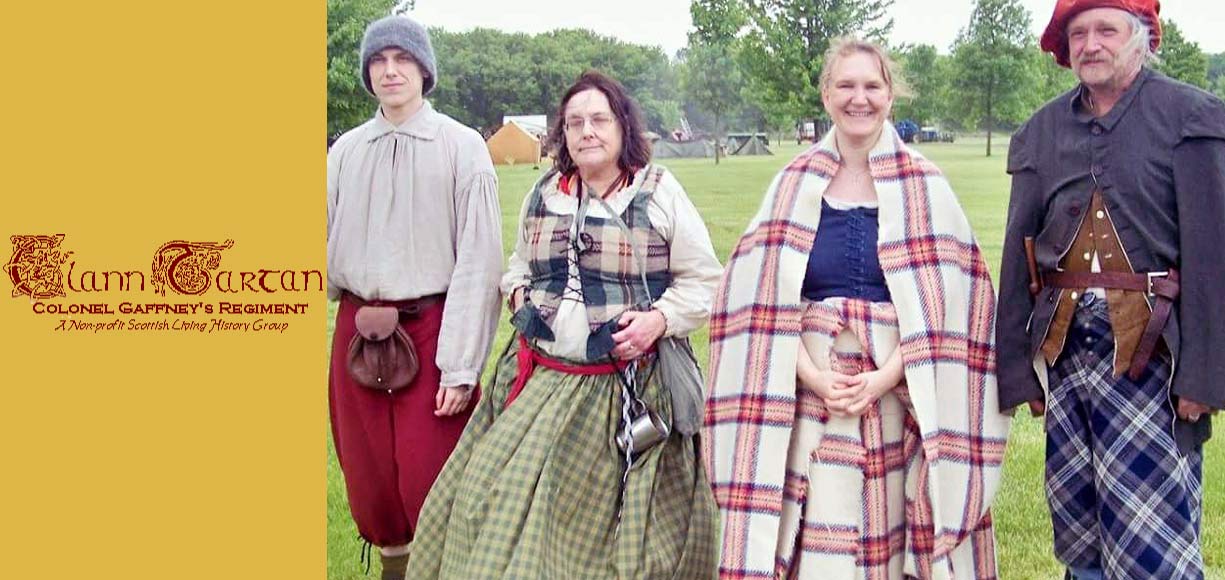Why an Irish Gown?
Kass McGann has several contemporary illustration of Irishwomen at http://www.reconstructinghistory.com/irish/leine.html, though these seem to be more upper and middle class. All are wearing léinte with large sleeves and gowns to match, a la Shinrone, but rather more ornate.
As for Irish Men, in John Derrick's Image of Ireland (1581)
"Their shirtes be verie straunge, not reaching paste the thie; With pleates on pleates thei pleated are as thick as pleates maie lye. Whose sleves hang trailing doune almost unto the Shoe; And with a Mantell commonlie, the Irish Karne doe goe."
The term "Karne" (kern) indicates this applies to lower classes.
The plates from Derrick are at
http://www.lib.ed.ac.uk/about/bgallery/Gallery/researchcoll/ireland.html.
In
http://www.lib.ed.ac.uk/about/bgallery/Gallery/researchcoll/pages/bg0054_jpg.htm
you can see an Irishwoman protesting while her farmhouse is being
torched and her cattle are driven off. Everybody is wearing léinte
with dangling sleeves.
This confirms McGann's inference from legislation of Henry VIII:
"We can gather from these descriptions that the woman's léine was as full as the man's. We can also deduce that they were of a similar cut since they are lumped together in this legislation." (Refering to an Act of Henry VIII)
So such a léine, and the gown over it, seems entirely appropriate for a lower class Irishwoman of the late 1500's. Furthermore, at http://www.reconstructinghistory.com/irish/shinrone.html McGann has a description of a similar gown from c. 1620, which brings it comfortably close to our period. Hence, the Shinrone gown seems entirely appropriate for a lower class Irishwoman c, 1630.
You may ask: Why would an Irish style gown appear in the Scottish
Highlands? A better question would be, why not? The Highlanders and
the Irish both spoke Gaelic--they could communicate with each other far
more easily than with Lowlanders or Englishmen. The North Channel
between Ireland and Scotland is not that wide, and there had been
connections across it for over 1000 years. This is reflected in
clothing. Kass reviews the evidence at
http://www.reconstructinghistory.com/scottish/kilts.html
and concludes:
"Therefore, Irish and Scottish dress would be nearly indistinguishable before 1600. Regional differences may have existed, but no documentation attests to what they were. In fact, many writers and painters mistakenly labeled their subjects "Irish" when they were really Highland Scots, and vice versa.
Wilson McLeod has reviewed the history of Irish/Highland relations in his book Divided Gaels: Gaelic Cultural Identities in Scotland and Ireland c.1200-c.1650. Culturally, Ireland was the dominant partner--there is much more Irish influence on Highland culture than the other way around. This would be reflected in clothing as well. Hence we can reasonably expect something like the Shinrone gown in the Highlands c. 1600.
In the early 1600's the Irish and Highland worlds began to diverge, due to the English conquest of Ireland in 1603. However, there were still significant connections as late as the 1640's--see David Stephenson, Highland Warrior: Alasdair MacColla and the Civil Wars, for some of the history. We know (see above) that gowns similar to that of Shinrone were still being worn in Ireland in the 1620's. They could have still crossed to Scotland then.
Note that the English conquered (sort of) the Irish, not the Highlanders. Irish dress became much more Anglicized after this, while in some respects Highland dress changed much more slowly. As late as 1639 there is a reference to Highland men with "long hanging sleeves" (See H. F. McClintock, Old Irish and Highland Dress, with notes on that of the Isle of Man, page 127). Hence their doublets must have had sleeves opening below (and, in this case, unbuttoned). It seems reasonable that at least some women's gowns would also retain that feature.
Furthermore, not everbody could afford to change their dress to accomodate the latest style. There are records of clothes being handed down from generation to generation. A doublet, or a gown, from 1600 could easily still have been worn in 1630. For all these reasons, the Shinrone gown seems appropriate for the Scottish Highlands 1630-1640.

